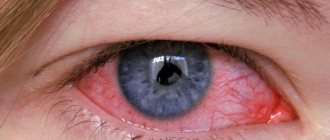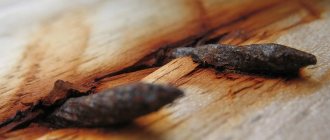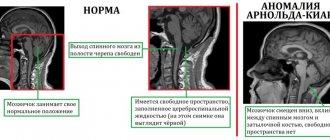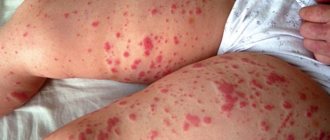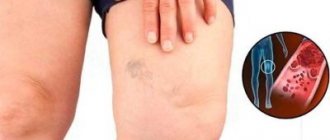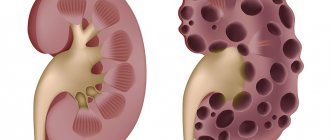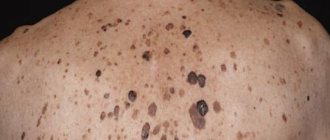Pulpitis is an inflammatory process that occurs in the soft tissues of the tooth. These tissues form a neurovascular bundle called the pulp. This is where the disease takes its name.
The most common cause of pulpitis is the progression of the carious process, when deep caries causes destruction of the hard tissues of the tooth. In this case, pathogenic microflora (streptococci, staphylococci and others) filling the carious cavity lead to inflammation of the dental pulp.
Also, the appearance of pulpitis can be caused by tooth trauma or poor-quality filling at the stage of caries treatment. Pulpitis is a rather dangerous disease. Its treatment should be carried out in a timely manner, since further development of the pathology can lead to the development of periodontitis and the formation of a peri-radicular cyst of the tooth.
How does pulpitis occur?
The occurrence of pulpitis
It is generally accepted that caries, especially in an advanced stage, is the most common cause of pulpitis. However, the development of the disease can also be a consequence of tooth trauma, and a consequence of improper treatment by an unqualified dentist.
There are several ways of infection of the pulp and, as a consequence, the occurrence of pulpitis:
- through the crown of the tooth, when the carious cavity grows, becoming a gateway for the penetration of microbes and pathogenic bacteria into the dentin and further into the pulp;
- through the apex of the tooth root (retrograde pulpitis).
Due to its specific pathogenesis, retrograde pulpitis is a rather rare occurrence. The following factors can provoke it:
- infection of the pulp through the blood in systemic viral diseases such as rubella or herpes;
- infection of tooth roots through the maxillary sinuses during sinusitis.
At the same time, one of the most common causes of pulpitis are dental errors:
- a poorly treated carious cavity is untreated caries, which leads to re-infection of dentin and the development of caries already under the filling;
- thermal burn of the pulp due to insufficient water cooling or overdrying of the tooth cavity during treatment;
- chemical damage to tooth tissue during treatment.
! You can protect yourself from the consequences of treatment by an unscrupulous dentist in advance by contacting a well-known dental clinic with a name and reputation. High-tech equipment, the availability of modern equipment and a staff of professional dentists will allow you to undergo a full diagnosis and receive timely, qualified treatment.
Why is it necessary to classify pulpitis?
The presence of such an extensive systematization of this dental disease is associated with different approaches to attempts to describe the picture of the disease. Various types of classifications of pulpitis suggest considering them from different perspectives: causes of occurrence and development, clinical picture, progression, circumstances of deep processes in the tooth canals, and others.
It has not yet been possible to develop a classification that describes pulpitis from all angles. Therefore, dentists have to integrate the existing clinical picture of an individual patient into the framework of existing methods for assessing it. Some classification schemes were developed decades ago, but are still used in the practice of diagnosing and treating pulpitis.
The first attempts to systematize this dental disease were made in the 20s of the last century and were intended to describe pulpitis as accurately as possible. These classifications were quite complex and cumbersome. That is why specialists carried out continuous work to improve methods for describing the disease. At intervals of 5-10 years, a new classification was proposed, which was based on earlier schemes, but had a certain new position in describing the picture of pulpitis.
Diagnosis of pulpitis
Diagnosis of pulpitis
When it comes to pulpitis, the occurrence of a pronounced pain syndrome is explained simply: the inflamed pulp in the edema phase increases in size, which leads to compression of nerve cells, and as a result, severe pain. You should not try to determine the diagnosis yourself, and if you experience toothache, you should immediately contact your dentist. If time is missed, the infection can spread and lead to serious complications: periodontitis, periostitis and osteomyelitis.
Professional diagnosis of pulpitis is extremely important; further treatment and prognosis for recovery depend on it.
! According to statistics, about 60% of pulpitis is chronic, and acute accounts for about 40%.
Usually, during an examination, the dentist questions the patient about the intensity and location of the pain, finds out when the tooth first became ill, and whether the pain intensifies at night. Previous viral diseases, stress or dental interventions can provoke an exacerbation of pulpitis.
The simplest and therefore most frequently used diagnostic methods include: visual inspection, percussion, probing and radiography.
.
Sometimes dentists diagnose the disease using electroodontometry
, determining the vitality of the pulp by its reaction to an electrical impulse. This method allows you to determine the shape of pulpitis most clearly.
Percussion
This type of diagnosis is carried out along with a patient interview and visual examination, but in itself it is not always informative. The doctor performs a percussion test by lightly tapping the instrument on the surface of the tooth. Percussion of a healthy tooth does not cause painless sensations and is accompanied by a clear and distinct sound. If the pulp is affected or periodontitis is present, the nature of the sound changes, as does its clarity and volume. The presence of inflammation in the periodontium is also revealed by a clinical pressure test - for 30 seconds the doctor applies pressure with his finger on the teeth, and if by the end of the pressure the patient experiences pain and a feeling of numbness, the test is considered positive.
Probing
In the presence of obvious caries, the walls of the cavity are first probed, which is usually painless in case of pulpitis. To make an accurate diagnosis, the doctor evaluates the sensitivity of both the walls and the bottom of the cavity, determines the visibility of the pulp in the carious cavity, its color and the presence of bleeding.
In cases of old, untreated pulpitis, the presence of a large amount of pigmented, loose dentin is determined in the cavity, and when palpating the transitional fold, the patient feels acute pain.
Radiography
Radiography is used to visualize the tooth and determine the localization of the pathological process. This method plays an important role in the diagnosis of pulpitis, and also helps the doctor assess the condition of the periapical tissues of the tooth in order to select subsequent treatment tactics.
Electroodontodiagnosis
Diseased and healthy teeth react to different current strengths, therefore, using electroodontodiagnosis (EDD), it is possible to assess the vitality of the pulp. The doctor determines whether the tooth can be treated and restored or should be removed. Because a tooth may react differently to electrical shocks in different situations, the diagnosis must take into account many factors, including the presence of chronic systemic diseases and the patient's age. External factors, for example, nearby UHF and microwave devices, can also influence the result of electrodiagnostics. Despite the fact that the electroodontic diagnostic method is accessible and informative, due to the large number of contraindications it can only be used as an additional method. To avoid obtaining false results, a competent and responsible doctor follows the research methodology and always acts exclusively in accordance with the instructions for the device.
Forms of pulpitis
The forms of pulpitis differ in the nature of the course of the disease and in localization. According to localization, coronal, total and root pulpitis are distinguished. According to the nature of the disease – acute and chronic.
Diagnostics
If you experience the slightest signs indicating the development of an acute form of focal pulpitis, you should immediately visit a dentist.
A qualified specialist conducts a number of diagnostic studies to accurately diagnose focal acute pulpitis:
- The acute form of pulpitis is diagnosed using a targeted photograph
Patient interview. The time of occurrence, intensity and location of pain is determined. Its irradiation and frequency are also determined.
- Visual examination of the oral cavity. Allows you to determine the presence of damage, fillings on the teeth, and periodontal swelling. By performing percussion, the peculiarity and nature of the pain is established.
- Instrumental examination. Helps establish the stage of the disease, the level of destruction of hard tooth tissues, the degree of caries development and the condition of the pulp chamber.
- Radiography. The image clearly demonstrates the condition of the pulp and dental canals.
- Electroodontodiagnostics. The level of EDI readings allows you to determine the depth of inflammation. The focal form is characterized by indicators of up to 20 μA.
Important! If standard studies do not allow diagnosing acute focal pulpitis, then laser Doppler flowmetry is prescribed, which allows identifying deviations in the trophism of the pulp.
Differential diagnosis makes it possible to identify the acute form of focal pulpitis from the following pathologies:
- Deep caries.
- Acute diffuse and chronic fibrous pulpitis.
- Periodontitis.
- Neuritis of the ternary nerve.
- Papillitis.
- Sinusitis.
Stages of development of pulpitis in a tooth
Acute pulpitis
- Focal
Pulpitis, in which inflammation affects only part of the pulp; manifested by severe paroxysmal pain every 5-7 hours for 10-15 minutes; the patient can pinpoint the tooth that is the source of the pain.
- Diffuse
Pulpitis, in which inflammation covers the entire pulp; attacks of pain last up to one hour, and sometimes longer; the pain radiates to neighboring teeth and gradually covers the entire jaw and head.
- Purulent
With this form of the disease, irreversible dissolution of the pulp tissue occurs, the pain becomes unbearable; A characteristic sign of purulent pulpitis is dulling of pain when exposed to cold, so the patient often spends time waiting for a doctor with a bottle of cold water applied to his cheek.
- Traumatic
Occurs after trauma to the jaw, after treatment or fracture of a tooth, when the pulp is exposed and causes acute pain when breathing, touching and at rest.
Symptoms for every case
The main symptom of tooth pulpitis is severe pain, which becomes more pronounced at night. The initial stage of the disease is characterized by a mild aching pain; as the disease progresses, it becomes more pronounced and pulsating. In chronic and purulent forms, pain occurs only during the period of exacerbation, but appears at the slightest tapping in the area of the affected tooth.
With diffuse and acute focal pulpitis, the pain is very strong and spreading. Intensifies in the evening. They have their own periodicity. The tooth becomes very sensitive to irritants, the pain does not decrease and does not subside even after they are eliminated. When tapped, the tooth is insensitive or slightly sensitive. Chronic fibrous pulpitis is asymptomatic. Occasionally, the patient may notice unpleasant sensations that do not cause severe discomfort.
Hypertrophic chronic pulpitis occurs after fibrous pulpitis. This usually happens in cases where the crown is severely damaged and the pulp is exposed to regular mechanical stress, due to which it becomes infected. When tapped, the tooth is sensitive, but this sign is not decisive. An x-ray shows that no changes have begun in the bone tissue of the root apexes, and in temporary teeth in 55% of cases the presence of destructive changes in the tissues around the tooth is detected. Gangrenous chronic pulpitis causes severe pain. When hot food hits a tooth, the pain intensifies; cold food, on the contrary, calms it down.
During exacerbations of any type of chronic pulpitis, voluntary pain occurs. They occur on their own, regardless of the impact on the pulpy tooth. There may be constant, spreading pain. This is typical for cases when the tooth cavity is open, pain appears when the pulp is exposed.
If left untreated, poor root canal treatment and lack of seals can cause complications such as periodontitis. Treatment of the complication is much more expensive, and the sensations are painful.
Chronic pulpitis
- Fibrous
The symptoms are not pronounced, so the patient may not pay attention to such pulpitis for years;
- Gangrenous
Acute untreated pulpitis, which has passed into the chronic stage, accompanied by suppuration, tissue necrosis, discoloration of enamel and bad breath.
- Hypertrophic
Pulpitis, in which a bleeding polyp is already visible in the tooth cavity, causing pain when chewing.
What is pulpitis? Photo
A tooth consists of dentin, enamel and a layer of soft tissue located underneath. Pulpitis is inflammation of these tissues. This is a dangerous problem that can lead to tooth loss. Moreover, this disease can lead to disruption of the structure of the jaw bones, diseases of the stomach and intestines, and even cause death.
Soft tissue damage
Pulpitis in a child
Pulpitis in a child
It is a mistake to believe that treatment of baby teeth is not necessary. Without adequate treatment, caries of a baby tooth in a child, just like caries in an adult, can very quickly turn into pulpitis with all its complications. There are known cases of death after complications of pulpitis due to the development of sepsis, when no more than two days passed from the first pulpitis pain to the development of facial edema and subsequent death.
To avoid any kind of complications, caries of primary teeth in children must be treated on time. And if the moment is missed and pulpitis has already developed, you need to contact the dentist immediately. A competent doctor will do everything possible to ensure that the treatment of a small patient is as painless, comfortable and, most importantly, effective.
Prevention of pulpitis
In the prevention of pulpitis, oral hygiene and timely treatment of carious lesions are of key importance.
Prevention involves cleaning the surfaces of teeth after eating. It is recommended to remove food debris from the interdental spaces using dental floss.
If you experience tooth pain, you should never postpone a visit to the dentist to avoid the development of serious complications!
Once every 6 months, as a preventive measure for caries and pulpitis, you need to visit the dentist and have the teeth professionally cleaned of plaque and mineralized deposits (stones) in the office, followed by remineralization therapy and coating the enamel with fluoride varnish.
Plisov Vladimir, dentist
9, total, today
( 168 votes, average: 4.56 out of 5)
Herpetic stomatitis: symptoms and treatment
How to relieve toothache at home without pills?
Related Posts
The most vulnerable teeth
The most vulnerable teeth
Inflammation can develop in any tooth, but there are certain groups of teeth that are more susceptible to pulpitis than others.
The first place in the risk group is occupied by molars or upper sixes. They erupt earlier than others and are in the most vulnerable zone. So the appearance of dark spots on these teeth in a child is not perceived by parents as an alarming signal, therefore, as the process worsens, there comes a time when the child begins to complain of unbearable pain in the tooth - and this is already pulpitis.
2nd place belongs to the upper lateral incisors. But the lower front teeth and canines are least susceptible to such ailments as caries, which means they are practically not threatened by pulpitis. However, it should be borne in mind that it is the lower teeth that most often suffer from the deposition of tartar on them.
WHO classification
The end of the 20th century, namely 1997, for dentistry was marked by the introduction of the International Classification of Diseases, 10th revision, which is known by the abbreviation ICD-10. It was approved by the World Health Organization, and already in 1999 it began to be widely used in dental practice for the diagnosis and treatment of pulpitis. This system represents the name of codes and their interpretation to describe the clinical picture of the disease. Classification of pulpitis according to the ICD includes the following items:
- Diseases of the pulp and periapical tissues are proposed to be designated using code K04.
- Pulpitis itself is coded K04.0.
- The initial stage of the disease, characterized by hyperemia, is designated K04.00.
- Acute pulpitis is proposed to be coded K04.01.
- If an abscess is detected, then code K04.02 is entered.
- The chronic form of pulpitis is designated K04.03, and if ulcers are diagnosed, then it is proposed to code the diagnosis as K04.04.
- If a patient has a chronic pulp polyp, it is designated K04.05.
- In case of a disease of the neurovascular tissue of the tooth of another specified nature, the mark K04.08 is put.
- If the cause of pulpitis is unclear, this is noted with code K04.09.
- Necrotic or gangrenous phenomena in the pulp are designated by code K04.1.
- If the dentist observes degenerative processes, such as denticles, pulp stones or calcifications, then he designates them with code K04.2.
- If there is an abnormal formation of hard tissue in the pulp area, mark K04.3 is made. Moreover, if this is irregular (secondary) dentin, then it is designated by code K4.3X. It is worth noting that in this situation, calcifications and stones in the pulp are excluded.
- In case of acute apical periodontitis, which is caused by changes in the neurovascular tissue of the tooth, the code K04.4 is assigned.
- If the dentist believes that he has a disease of the pulp and periapical tissues that do not fit into the above points, then he puts the mark K04.9.
This WHO classification of pulpitis, according to dentists, is not entirely convenient. However, it is still used to this day as an official scheme for compiling statistical reports of specialists on the work done over a certain period of time.
The doctor is required to put codes and codes for this classification on the patient’s card and coupon. Many dentists admit that they often have to fit the diseases they treat into the framework of the scheme proposed by WHO, although in their work they use completely different convenient ways to characterize dental pathology.
Consequences of pulpitis
Consequences of pulpitis
The biggest mistake that some patients make when experiencing toothaches is the desire to endure them, drowning them out with painkillers. This often leads to the development of dangerous complications of pulpitis, acute or chronic periodontitis. In addition to unbearable throbbing pain, high body temperature and complete loss of ability to work are added. Seeing a doctor at this stage of the disease is accompanied by increased psychological and physical discomfort for the patient, and after treating the tooth cavity, where the pulp was previously located, purulent contents with an unpleasant odor come out.
When periodontitis that arises against the background of pulpitis enters the chronic stage, fistulas with purulent contents form on the gums. This stage of the disease is considered the most dangerous to human health. Patients who have passed this stage remember for the rest of their lives the terrible picture of hanging “pus pockets” from their newly extracted teeth. Whenever at this moment it becomes clear that sometimes it is better to prevent than to treat. However, complications of pulpitis can lead not only to tooth loss, but sometimes serious diseases develop that threaten the patient’s life: phlegmon, abscess and sepsis.
Phlegmon leads to the fact that the patient’s general well-being sharply deteriorates, body temperature rises to a critical level, the shape of the face is distorted, and in addition to pain, a feeling of fullness in the jaw occurs. Sepsis is a blood poisoning and the most dangerous complication of untreated pulpitis, in which death cannot be ruled out.
Are you still wondering whether to see a dentist?
Causes of dental pulpitis
- Most often, the cause of this problem is advanced caries. Having begun as a lesion of the upper part of the tooth enamel, caries quickly spreads inward into deeper tissues. When the lesion reaches the soft tissues, pulpitis may occur
- Pathogenic bacteria and microorganisms quickly destroy the enamel and move inside the tooth. If medical assistance is not provided in time, cariogenic microorganisms will begin their inflammatory process in the pulp
- There are other reasons for this problem. One of them is insufficient cleaning of tissues by the dentist from carious bacteria when installing a filling. In this case, the bacteria will continue their harmful effects and, if they enter the pulp, they will cause inflammation.
- Inflammation of the pulp can be caused by overdrying of the dental cavity before filling, thermal burn when drilling affected tissues, due to injuries, temperature and other irritants, blood poisoning and periodontal inflammation.
IMPORTANT: The pulp is an important part of the tooth. It is she who helps us feel cold, hot and pressure on the tooth. Without it, the tooth becomes “dead.” Unfortunately, soft tissue inflammation is often treated by removing the pulp. Until today it was impossible to restore it. But, thanks to Dr. Misako Nakashima from the National Center for Geriatrics and Gerontology in Obu (Japan), the soft tissue of the tooth can soon be restored using stem cells. The first experiments were successful.
Treatment of pulpitis
As soon as the diagnosis of “pulpitis” is made, the dentist begins to treat it using one of the methods: preserving the entire pulp, with its partial or complete removal from the root canal system.
The method of preserving the entire pulp is currently not popular, since such treatment often causes a large number of complications. Of course, each case of pulpitis treatment is individual, but in most situations, dentists still choose the third treatment option - complete removal of the pulp.
In cases where, due to the structure of the canal, it is not possible to go through it completely, the doctor uses the method of partial removal of the pulp.
Stages of endodontic treatment
If a patient consults a dentist at the initial stage of pulpitis, treatment is considered simple and usually takes place in one visit. When pulpitis is advanced, long-term treatment in several stages is required.
Stage one
Introduction of anesthesia, isolation of teeth using a rubber dam - a special latex lining.
Stage two
Cleaning dental canals from bacteria, providing access to them through a prepared carious cavity, removing the roof of the pulp chamber and providing access for instruments to the canals.
Stage three
The canals are treated using mechanical and chemical methods. At this stage, it is very important to determine the true length of the canals, for which the doctor enters files into them and takes an x-ray.
The doctor carries out chemical disinfection using disposable dental needles. The use of pastes for pulp necrosis involves the use of special antiseptics or medications for additional disinfection of the canals. Depending on the chosen treatment tactics, the process can take from one to four days.
Stage four
After making sure that the canals are completely cleaned, the doctor proceeds to the final stage - filling. However, after filling the canals, the full treatment of pulpitis is not considered complete. To speed up the recovery process, an experienced dentist must prescribe procedures that will minimize post-filling discomfort and help avoid inflammation.
Why does my tooth hurt at night?
Pulpitis can be identified by nightly attacks of pain. This violation occurs for many reasons:
- Horizontal position. In such a situation, there is a large rush of blood to the head and jaw, which increases pressure on the inflamed area and the nerves of the diseased tooth.
- Changes in the general condition of the body. At night, the body's susceptibility to various pathologies and inflammatory processes increases.
- Increased blood pressure.
Read also: Tooth hurts after light filling
Pain can occur with pulpitis at night due to exhaustion of the nervous system, chronic lack of sleep, smoking, drinking coffee and mental disorders. Very often the patient sets himself up for discomfort, thereby only further aggravating the situation.
Recovery period
Once treatment for pulpitis is completed, the patient will need some more time to fully recover - from one week to a month. During this period, physical therapy is indicated, for example laser therapy using a helium-neon apparatus. This is necessary to speed up the healing process and consolidate the therapeutic effect.
Since pulpitis is an inflammatory disease, after treatment in the clinic it is necessary to take a course of non-steroidal anti-inflammatory drugs at home, such as: Ibuprofen, Ketanov, Naproxen-Acri. However, it should be remembered that all anti-inflammatory and painkillers have their contraindications, so the choice of a specific medication must be agreed with your doctor.
Infectious pulpitis
This type of disease is caused by the activity of bacteria that release toxins and provoke inflammation of the vascular and nerve bundles of the tooth. In 9 out of 10 cases, microorganisms enter from the carious cavity inside through the dentinal canals or act on the exposed surface of the nerve. Less common is retrograde pulpitis, when microbes enter the tooth through a hole in the root apex. This occurs in infectious diseases such as acute respiratory infections, rubella, osteomyelitis, sinusitis or periodontitis. In isolated cases, infection can be hematogenous. The most reliable aspect to recognize pulpitis is etiology. Classification according to this principle is quite often used by doctors.

